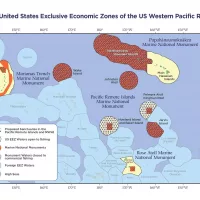
The following column first appeared on the Honolulu Star Advertiser newspaper Insight section on April 28 and is re-printed here with permission.
By Dr Ray Hilborn
The Biden administration is proposing further expansion of no-take areas in the U.S. Pacific territories — and this has been heralded by some environmental groups as further progress in ocean protection, while the government of American Samoa, the fishing industry and fishery managers have generally opposed the expansion.
What are the benefits? This is not about protecting fragile coral reefs; these have already been protected by a wide range of actions, and the only thing that the current or expanded marine monuments and marine protected areas (MPAs) impact is the tuna fisheries of U.S. fishermen.
A recent study by the scientists responsible for analyzing the status of the tuna fisheries of the western Pacific concluded that such large MPAs would lead to less than 5% increase in the abundance of tuna while providing no increase in catch. They looked in particular at the large MPA established by Kiribati in the Phoenix Island Protected Area (PIPA) and found the conservation benefits (increase in tuna abundance) to be “weak to non-existent.” PIPA was heavily fished by foreign fleets under license, whereas in U.S. waters fishing pressure is much lower, thus the benefits from eliminating fishing in U.S. waters would be even weaker and even more “non-existent.”
There is no analysis of the change in abundance inside the Papahanaumokuakea Marine National Monument, but the amount of fishing within the monument before expansion was very low, and because the stocks of tuna are healthy, we would have expected the impacts to be “weak to non-existent.” A 2022 study by economists from University of Hawaii-Manoa claimed great benefits of the monument, especially for yellowfin tuna, which was surprising, because the yellowfin stock is almost totally unfished in the region. The economists claimed a 54% increase in catch rate for yellowfin near the monument, but failed to say that before the monument was expanded, the catch rate was almost three times higher near the boundary than hundreds of miles away.
After expansion it was still higher near the boundary, and the catch rate there did double, but it went up even more several hundreds of miles away as yellowfin tuna benefitted from an El Nino event. Quite simply, the Papahanaumokuakea Marine National Monument has had no significant impact on the tuna populations, nor should it have ever been expected to have any impact.
Advocates of MPAs claim these areas provide protection for the marine ecosystems — but protection from what? In U.S. Pacific waters, overfishing for tuna is simply not a problem. MPAs in various forms do not protect marine ecosystems from climate change, plastic pollution, exotic species or most real threats; all they really do is restrict fishing, and this make the lives of fishermen harder as they have to travel farther to catch their fish.
The environmental movement to close almost all U.S. Pacific waters to fishing has two motivations. First is the false belief that the fisheries are not well regulated, and overfishing is a problem. Second, and most important, is the desire of the advocacy groups to claim “success” by closing more of the oceans. The MPA movement is well funded by rich individuals and foundations who come to the Pacific to tell the residents how to manage their affairs, and this is a remnant of colonialism that must be resisted.
Ray Hilborn is a professor of fisheries and aquatic sciences at the University of Washington; he is a member of the science and statistics committee of the Western Pacific Fishery Management Council.




